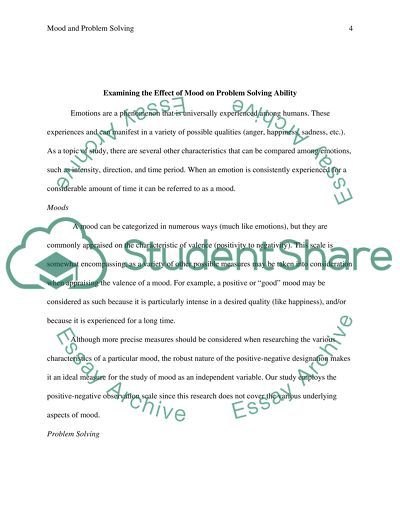Cite this document
(“Examining the Effect of Mood on Problem Solving Ability Research Paper”, n.d.)
Retrieved de https://studentshare.org/psychology/1392786-mood-and-problem-solving-ability
Retrieved de https://studentshare.org/psychology/1392786-mood-and-problem-solving-ability
(Examining the Effect of Mood on Problem Solving Ability Research Paper)
https://studentshare.org/psychology/1392786-mood-and-problem-solving-ability.
https://studentshare.org/psychology/1392786-mood-and-problem-solving-ability.
“Examining the Effect of Mood on Problem Solving Ability Research Paper”, n.d. https://studentshare.org/psychology/1392786-mood-and-problem-solving-ability.


